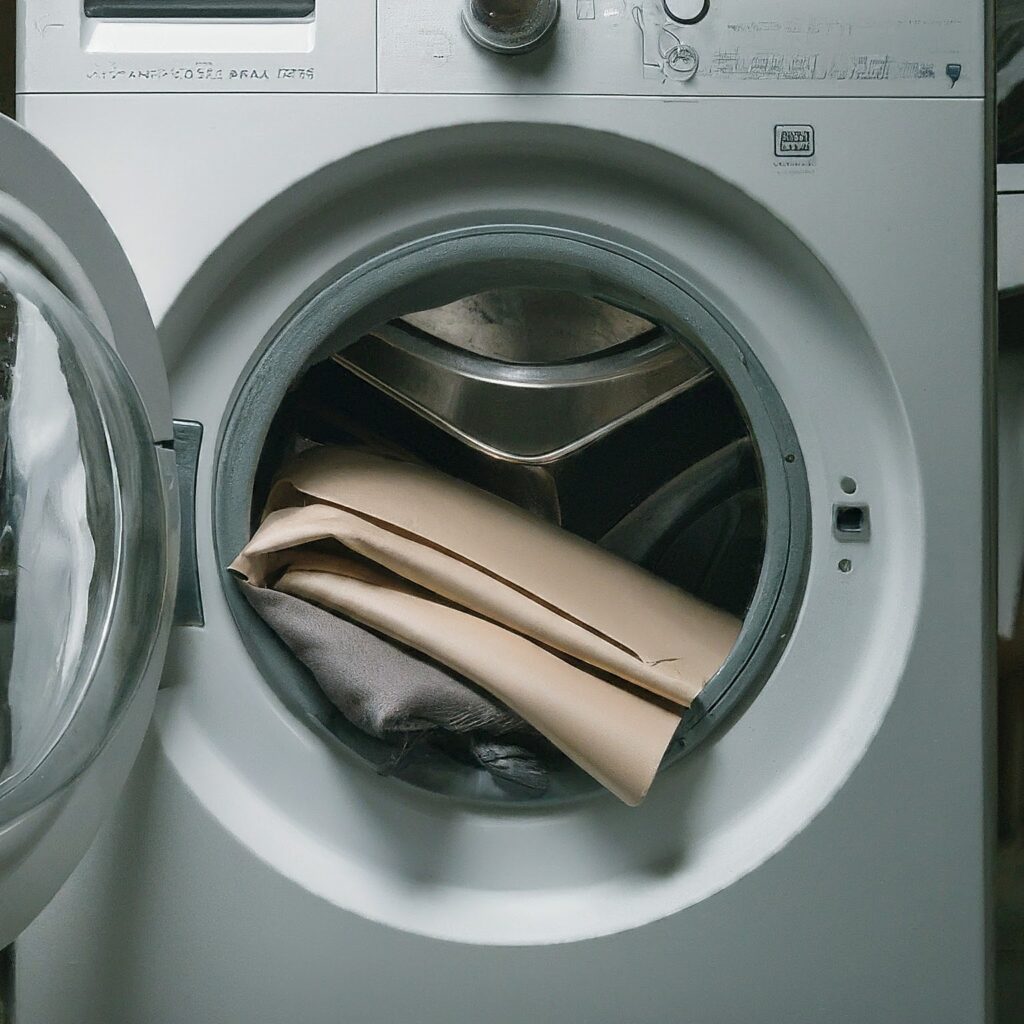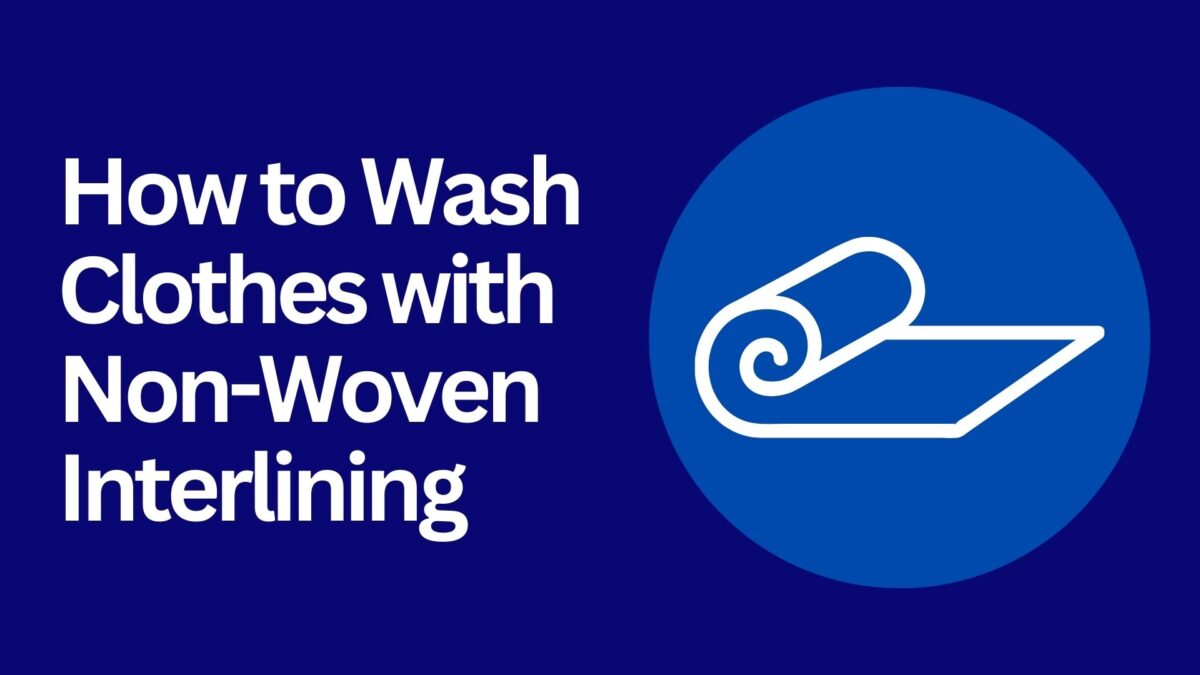How to Wash Clothes with Non-Woven Interlining
Hey there, laundry lovers! Ever wonder how some clothes keep their nice shape? It’s often thanks to a special fabric called non-woven interlining that’s hidden inside. This special material adds body and support to things like collars, cuffs, and other parts that need a little extra strength. But can you just toss those clothes in the wash with everything else? Let’s explore the best ways to care for your clothes with non-woven interlining.
Table of Content
- What is Non-Woven Interlining and Why Do We Use It?
- Understanding the Care Label
- Tips and Techniques for Washing Clothes with Non-Woven Interlining
- Drying Clothes with Non-Woven Interlining
- Conclusion
What is Non-Woven Interlining and Why Do We Use It?
Non-woven interlining is a unique interfacing fabric backing made by bonding fibers together (unlike woven interlining fabrics where threads are interlaced). This creates a lightweight yet supportive material that’s perfect for adding structure to various garment components.
Benefits of using non-woven interlining:
- Enhanced Shape and Drape: It helps collars and cuffs maintain their crispness, prevents garments from sagging, and creates a more polished look.
- Added Stability: It provides extra support in areas that experience stress during wear, like pockets and buttonholes.
- Lightweight Comfort: Despite its structural properties, non-woven interlining is typically thin and breathable, ensuring comfortable wear.
Understanding the Care Label
Look for the tag! It’s like a little instruction booklet sewn onto your clothes. This tag tells you how to wash, dry, and iron your clothes, including any special instructions for the stiffener fabric inside.
Here’s what to look for on the care label for clothes with non-woven interlining:
- Washing Instructions: Look for symbols indicating hand washing or machine washing for interfacing .
- Water Temperature: The care label will specify the recommended water temperature .
- Drying Instructions: Symbols will indicate whether to tumble dry, line dry, or dry flat.
Remember, following the manufacturer’s recommendations is crucial to ensure the longevity of your garment and its interlining (fusible interlining or non-fusible interlining , woven interlining or non-woven interlining ).

How to Wash Clothes with Non-Woven Interlining: Tips and Techniques
Now that you’ve consulted your garment’s care label, let’s explore how to wash clothes with non-woven interlining, focusing on both hand washing and machine washing techniques:
Washing by Hand
Some garments with non-woven interlining, especially those made from delicate fabrics like silk or lace, might require a gentler approach. Here’s how to hand wash them effectively:
- Preparation: Fill a basin with cool or lukewarm water (depending on the care label instructions) and add a mild detergent specifically formulated for delicate fabrics.
- Pre-treat Stains: If there are any stains, pre-treat them with a gentle stain remover before submerging the garment with the interfacing (woven interlining or non-woven interlining ).
- Gentle Swishing: Turn the garment inside out and gently swish it in the water for a few minutes. Avoid vigorous scrubbing, as this might damage the interfacing.
- Rinsing: Rinse the garment thoroughly with clean, cool water until all soap residue is removed.
Tips for Handwashing:
- Avoid wringing or twisting the garment, as this can stress the interlining and distort the shape.
- Gently squeeze out excess water by pressing the fabric between your palms.
- Lay the garment flat on a clean towel to dry. Do not hang delicate garments with interlining, as the weight of the water can pull on the fabric and damage the interlining bond.
Machine Washing
If your garment’s care label allows for machine washing, you can follow these steps for a safe and effective clean:
- Preparation: Turn the garment inside out to protect the interfacing. Close zippers and buttons to prevent snags.
- Washing Machine Settings: Choose a gentle cycle with cold water .
- Detergent: Use a mild detergent suitable for the fabric type. Avoid harsh detergents or bleach, as they can damage the interlining.
- Washing Bag : For extra protection, consider using a mesh laundry bag, especially for delicate garments with woven interfacing fabric or non-woven interfacing fabric.

Tips for Machine Washing:
- Avoid overloading the washing machine. This can cause excessive agitation and stress on the interlining.
- Skip the spin cycle if possible. The high spin speeds can damage the interlining
While these tips offer general guidance, remember to prioritize the specific care instructions on your garment’s label for fusing interfacing , woven or non-woven.
Drying Clothes with Non-Woven Interlining
Drying is just as important as washing when it comes to maintaining the integrity of your interlined garments. Here’s how to ensure proper drying for both hand-washed and machine-washed clothes:
Drying Hand-Washed Clothes:
- Reshape: After gently squeezing out excess water, reshape the garment carefully, paying attention to areas with interlining like collars and cuffs. This helps maintain the shape and prevent wrinkles from setting in the interfacing fabric.
- Towel Drying: Lay the garment flat on a clean, absorbent towel. You can roll the towel with the garment inside to remove additional moisture.
- Air Drying: Choose a well-ventilated location away from direct sunlight to air dry your garment completely. Avoid hanging delicate pieces, as the weight of the water can pull on the fabric and damage the interlining bond.

Drying Machine-Washed Clothes:
- Check the Label: Always refer to the care label for drying instructions. Some fusible interlining might tolerate low heat tumble drying, while others might require line drying.
- Low Heat Tumble Drying : If the care label permits, use the lowest heat setting possible on your dryer. Consider adding a few tennis balls to the dryer to help fluff the garment and prevent wrinkles. However, avoid using tennis balls with delicate garments with collar interlining.
- Line Drying: For garments that require line drying, hang them on a sturdy drying rack or clothesline. Choose a shady location with good air circulation.
Tips for Drying Clothes with Non-Woven Interlining:
- Avoid High Heat: High heat from dryers can damage the adhesive holding the interlining in place, especially for non-woven fusible interlining.
- Remove Promptly: Once the garment is dry, remove it from the dryer or clothesline promptly to prevent wrinkles.

Conclusion
By following these tips and understanding the care requirements for non-woven interlining, you can confidently wash and dry your garments, ensuring they maintain their shape, structure, and overall beauty. Remember, a little knowledge goes a long way in caring for your clothes and extending their lifespan.
So, Happy Sewing
Link of related Articles
- Demystifying Non-Woven Interlining: Types, Weights, and Applications
- Exploring Non-Woven Interlining: A Comprehensive Guide

